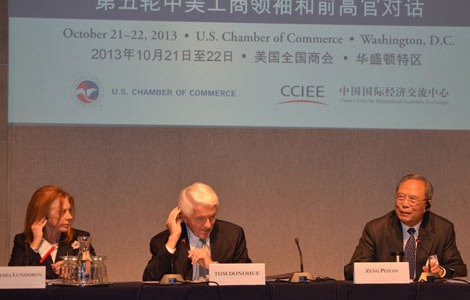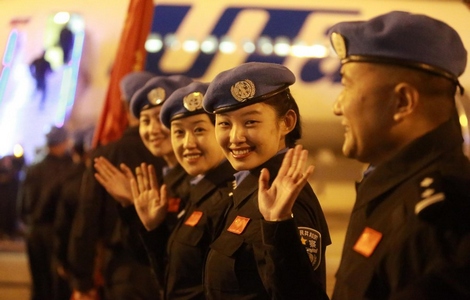Cycle of human rights progress
Updated: 2013-10-24 07:12
By Shan Chu (China Daily)
|
||||||||
Despite challenges, China's achievements in the legal, economic, social and political fields speak louder than words
China underwent its second Universal Periodic Review at the United Nations Human Rights Council on Tuesday.
During the session, China stated its position on protecting human rights and outlined its new achievements, challenges and future goals, with emphasis on the implementation of the recommendations it accepted at the first UPR four years ago. An overwhelming majority of countries commended China's significant progress in protecting human rights. The efforts by the country and its people to promote and protect human rights were fully recognized by the international community.
The promotion and protection of human rights is a journey of a thousand miles and we have to begin with a single step.
Four years ago, the Chinese government made a solemn commitment at the first UPR: "When China undergoes the next review, the world will see a China with a more prosperous economy, improved democracy and the rule of law, a more harmonious society and people living in greater happiness."
Now the commitment has been basically fulfilled by every step China has taken to advance the cause of human rights in recent years.
A single step could be as big as the abolishment of the death penalty for 13 separate nonviolent economic crimes, and as small as the direct election of villagers' committees in rural areas. It could be a long-term policy such as building a social security system covering urban and rural residents, or a one-off program like the 4 trillion yuan ($645 billion) economic stimulus package that has boosted the economy and created jobs. It could be a holistic plan like the National Human Rights Action Plan of China (2012-15) which is based on the experience of the fully-implemented National Plan 2009-10, and could also be a concrete action as an open and constructive dialogue on the issue of human rights with another country. All these steps lead to a giant leap in the protection of human rights in China.
A small number of Western countries tend to lash out at China's human rights out of an ideological bias and based on unfounded information. But facts and figures speak louder than words. The following gives a vivid picture of China's protection of economic, social and cultural rights, civil and political rights as well as the rights of special groups.
The economy is the foundation for promoting and protecting human rights. Over the past years, China has continued to make development its top priority, effectively responded to the impact of the global financial crisis and realized 9.3 percent GDP growth in spite of the widespread economic slowdown in the world. From 2008 to 2012, rural and urban income increased by 9.9 percent and 8.8 percent annually. In 2012, 12.66 million urban jobs were created and 260 million rural migrant workers found jobs in cities. The ratio of government spending on education to GDP increased from 3.31 percent to 4.07 percent. A nationwide primary medical insurance system has been basically established, and over 1.3 billion people have joined various medical insurance programs.
Political rights of Chinese citizens have been better upheld. The judicial system has been strengthened with enhanced human rights protection as an important target. All 60 tasks of the judicial system reform launched in 2008 have been completed and judicial transparency has been improved.
Freedom of speech has been enjoyed extensively. By the end of 2012, the number of netizens in China reached 564 million. People express views freely through micro blogs, postings and other means in accordance with law.
The level of protection of human rights for special groups is an important yardstick in measuring cultural progress in China. From 2008 to 2012, nearly 12.2 million people with disabilities were rehabilitated to varying degrees. By 2012, insurance programs for senior citizens had covered all rural areas and non-working urban residents, with the participation of 790 million people. Ethnic groups enjoy extensive human rights. Their freedom of religious belief and the right to use and develop their spoken and written languages are fully respected and guaranteed.
The successful story of the Chinese way to promote and protect human rights is quite different from the Western style. This, once again, proves that there is neither a universally applicable nor best model of human rights development, but only the most appropriate.
As the saying goes, none but the wearer knows if the shoe fits. Different countries face different challenges and priority tasks in the field of human rights, and their paths toward human rights development are bound to differ as well.
To judge whether a path is good or not, the key is to see whether it meets people's needs and aspirations and brings benefits to the people. The socialist human rights development path with Chinese characteristics chosen by the Chinese people suits China's conditions, and has effectively safeguarded various rights of 1.3 billion people and upgraded China's human rights development to an unprecedented level. Thus, China should stay firmly on this path.
As another proverb says, none but the wearer knows where the shoe pitches. China is a big developing country with a vast population. We should be soberly aware of the difficulties and challenges we face. Arduous efforts are still to be made to solve the numerous problems in the development of various undertakings that bear on the people's vital interests. There is still room for improvement. New ways and measures need to be explored to better promote and protect human rights. We have every reason to believe that by the next cycle of the UPR on China, we will see even greater progress in the field of human rights.
The author is a Beijing-based scholar of international relations.
(China Daily 10/24/2013 page9)

 Mass. teacher slain; 14-year-old student charged
Mass. teacher slain; 14-year-old student charged
 Driven by smiles
Driven by smiles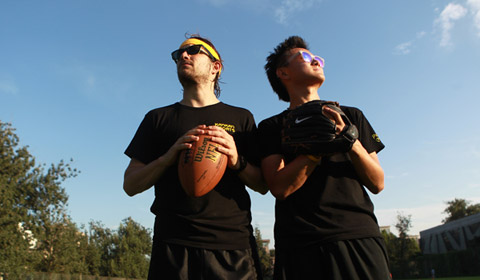
 Camp gives sporting chance for students headed overseas
Camp gives sporting chance for students headed overseas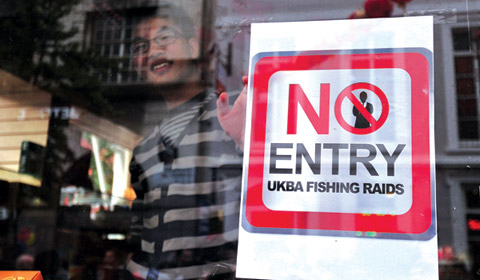
 Chinese protest UK 'fishing' raids
Chinese protest UK 'fishing' raids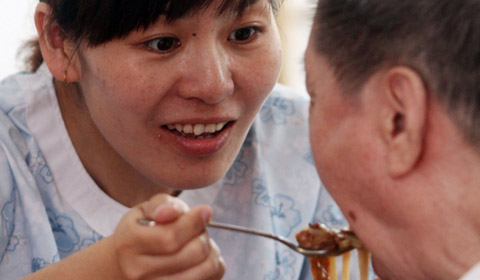
 Caretakers in need of counseling
Caretakers in need of counseling Pumpkin fun ahead of Halloween
Pumpkin fun ahead of Halloween
 Weakening Raymond soaks Mexico, no serious damage
Weakening Raymond soaks Mexico, no serious damage Apple unveils new Macs, iPad ahead of holidays
Apple unveils new Macs, iPad ahead of holidays
Most Viewed
Editor's Picks
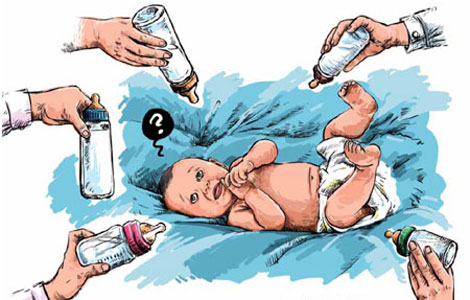
|

|

|

|

|

|
Today's Top News
Yale-China partners 100,000 Strong Foundation
China could help rebuild US infrastructure
Atlanta zoo’s cubs named Mei Lun and Mei Huan
TCL not just selling TVs
Mobile giants talk future in Frisco
Starbucks' pricing furor: tempest in a coffee pot
US-China trade talks a 'turning point' in relations
US press not so free, experts say
US Weekly

|

|
